Introduction to NAD Surround Sound Receivers
NAD, short for New Acoustic Dimension, is a renowned brand in the audio industry known for its high-quality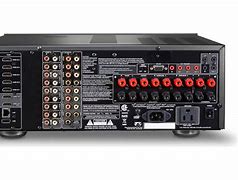 audio equipment. Founded in 1972, NAD has been dedicated to producing audio products that deliver exceptional sound quality and performance. Over the years, NAD has gained a reputation for its innovative designs and commitment to providing audiophiles with the best audio experience possible.
audio equipment. Founded in 1972, NAD has been dedicated to producing audio products that deliver exceptional sound quality and performance. Over the years, NAD has gained a reputation for its innovative designs and commitment to providing audiophiles with the best audio experience possible.
Surround sound has become an integral part of home theater systems, allowing viewers to immerse themselves in a cinematic experience from the comfort of their own homes. With the advancement of technology, surround sound has evolved to provide a more realistic and immersive audio experience. NAD surround sound receivers are designed to deliver the highest quality audio and support various surround sound formats, making them an excellent choice for home theater enthusiasts.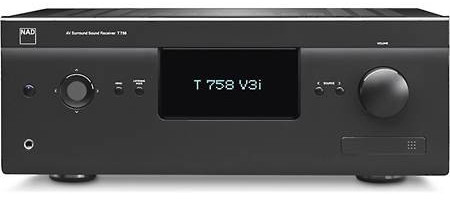
NAD is a top choice for surround sound receivers due to its commitment to audio excellence. The brand focuses on delivering clean and accurate sound reproduction, ensuring that every detail of the audio is faithfully reproduced. NAD receivers are known for their high power output, allowing them to drive even the most demanding speakers with ease. Additionally, NAD receivers offer a wide range of connectivity options, making it easy to integrate them into any home theater setup.
Understanding the Basics of Surround Sound
Surround sound refers to a system that uses multiple speakers placed around the room to create a three-dimensional audio experience. By placing speakers strategically, surround sound systems can reproduce sounds from different directions, creating a more immersive and realistic audio experience.
There are several types of surround sound formats, each offering a unique audio experience. The most common formats include Dolby Digital, DTS, and Dolby Atmos. Dolby Digital is a widely used format that provides 5.1 channel surround sound, meaning it uses five speakers and one subwoofer. DTS is another popular format that offers similar capabilities to Dolby Digital.
Dolby Atmos is the latest advancement in surround sound technology, offering a more immersive audio experience. Unlike traditional surround sound formats, Dolby Atmos adds height channels to the mix, allowing sound to be reproduced from above the listener. This creates a more realistic and enveloping audio experience, making viewers feel like they are truly part of the action.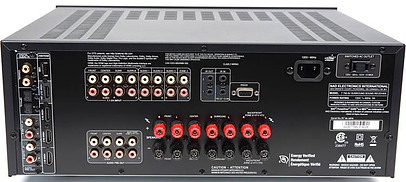
Surround sound enhances the viewing experience by immersing viewers in a realistic audio environment. It allows sounds to be reproduced from different directions, creating a more accurate representation of how sound behaves in the real world. This adds depth and dimension to the audio, making it feel more lifelike. Whether it’s the sound of footsteps approaching from behind or a helicopter flying overhead, surround sound brings movies, music, and games to life.
Key Features of NAD Surround Sound Receivers
NAD surround sound receivers come packed with features that enhance the audio experience and make them easy to use. Here are some key features to look out for when considering a NAD receiver:
1. Power output and channel configuration: NAD receivers are known for their high power output, allowing them to drive even the most demanding speakers with ease. They offer various channel configurations, from 5.1 to 7.1 and beyond, giving you the flexibility to create a surround sound setup that suits your needs.
2. Audio and video processing capabilities: NAD receivers feature advanced audio and video processing capabilities, ensuring that you get the best possible sound and picture quality. They support various audio formats, including Dolby Digital, DTS, and Dolby Atmos, allowing you to enjoy a wide range of content with immersive sound.
3. Connectivity options: NAD receivers offer a wide range of connectivity options, making it easy to connect your devices and integrate them into your home theater setup. They feature HDMI inputs and outputs, allowing you to connect your Blu-ray player, gaming console, and other devices with ease. They also support optical and coaxial inputs for connecting older devices.
4. User-friendly interface and remote control: NAD receivers are designed with user-friendliness in mind. They feature intuitive interfaces and come with a remote control that allows you to easily navigate through menus and adjust settings. Some models also offer smartphone app integration, allowing you to control your receiver from your phone or tablet.
NAD Receiver Models and Specs
NAD offers a range of surround sound receivers to suit different budgets and needs. Here is an overview of NAD’s current receiver lineup:
1. NAD T 758 V3: The NAD T 758 V3 is a 7.1 channel receiver that delivers 110 watts per channel. It features Dolby Atmos and DTS:X support, allowing you to enjoy immersive audio. It also offers advanced room correction and EQ capabilities, ensuring that you get the best possible sound quality in your room.
2. NAD T 777 V3: The NAD T 777 V3 is a 7.1 channel receiver that delivers 140 watts per channel is no longer available through NAD but can be found on some online and in store outlets. It features Dolby Atmos and DTS:X support, as well as advanced room correction and EQ capabilities. It also offers a wide range of connectivity options, including HDMI, optical, and coaxial inputs. 
3. NAD T 787: The NAD T 778 is a 9.1 channel receiver that delivers 140 watts per channel. It features Dolby Atmos and DTS:X support, as well as advanced room correction and EQ capabilities. It also offers a wide range of connectivity options, including HDMI, optical, and coaxial inputs.
When choosing a NAD receiver, it’s important to consider your budget and the specific needs of your home theater setup. If you have a larger room or demanding speakers, you may want to opt for a receiver with higher power output. If you’re looking for the latest audio technologies, such as Dolby Atmos and DTS:X, make sure the receiver you choose supports these formats.
Setting Up Your NAD Receiver for Optimal Performance
To ensure that you get the best possible performance from your NAD receiver, it’s important to set it up correctly. Here are some tips for setting up your NAD receiver:
1. Proper placement and ventilation: When setting up your NAD receiver, make sure to place it in a well-ventilated area to prevent overheating. Avoid placing it in enclosed spaces or near heat sources. Also, make sure to leave enough space around the receiver for proper airflow.
2. Speaker calibration and setup: Most NAD receivers come with built-in room correction and EQ capabilities, allowing you to optimize the sound for your specific room. Follow the instructions provided with your receiver to calibrate your speakers and adjust the settings to suit your preferences.
3. Firmware updates and maintenance: It’s important to keep your NAD receiver’s firmware up to date to ensure that you have access to the latest features and bug fixes. Check the NAD website regularly for firmware updates and follow the instructions provided to update your receiver. Additionally, make sure to clean your receiver regularly to prevent dust buildup and maintain optimal performance.
NAD Receiver Connectivity Options
NAD receivers offer a wide range of connectivity options, making it easy to connect your devices and integrate them into your home theater setup. Here are some of the connectivity options available on NAD receivers: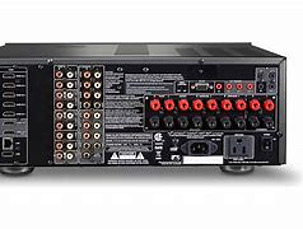
1. HDMI: HDMI is the most common connectivity option found on NAD receivers. It allows you to connect your Blu-ray player, gaming console, and other devices with a single cable, providing both audio and video signals. NAD receivers typically feature multiple HDMI inputs and outputs, allowing you to connect multiple devices.
2. Optical and coaxial inputs and outputs: NAD receivers also support optical and coaxial inputs and outputs, allowing you to connect older devices that don’t have HDMI outputs. These connections are commonly used for connecting DVD players, CD players, and other audio devices.
3. Wireless connectivity options: NAD receivers also offer wireless connectivity options, allowing you to stream audio wirelessly from your smartphone, tablet, or computer. They support Bluetooth, Wi-Fi, and AirPlay, giving you the flexibility to stream audio from a wide range of devices.
4. Multi-room audio and video distribution: Some NAD receivers offer multi-room audio and video distribution capabilities, allowing you to play audio and video in different rooms of your house. This is especially useful if you have a whole-house audio system or want to extend your home theater experience to other rooms.
Advanced Audio Processing Technologies in NAD Receivers
NAD receivers come equipped with advanced audio processing technologies that enhance the audio experience. Here are some of the advanced audio processing technologies found in NAD receivers: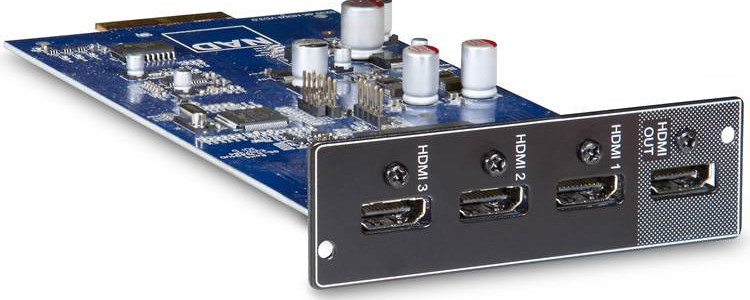
1. Dolby Atmos and DTS:X support: Dolby Atmos and DTS:X are the latest advancements in surround sound technology, offering a more immersive audio experience. NAD receivers that support these formats can reproduce sound from above the listener, creating a more realistic and enveloping audio experience.
2. Room correction and EQ: NAD receivers feature advanced room correction and EQ capabilities, allowing you to optimize the sound for your specific room. These technologies analyze the acoustics of your room and make adjustments to ensure that you get the best possible sound quality.
3. High-resolution audio playback: NAD receivers support high-resolution audio formats, allowing you to enjoy music in its purest form. These formats offer higher sampling rates and bit depths than standard audio formats, resulting in better sound quality.
NAD Receiver Remote Control and App Integration
NAD receivers come with a remote control that allows you to easily navigate through menus and adjust settings. The remote control is designed to be user-friendly and intuitive, making it easy for anyone to operate the receiver.
In addition to the physical remote control, NAD also offers a smartphone app called NAD Remote App. The app allows you to control your NAD receiver from your phone or tablet, giving you the convenience of controlling your receiver from anywhere in your home. The app offers a user-friendly interface and provides access to all the features and settings of your receiver.
NAD receivers also offer integration with third-party home automation systems, allowing you to control your receiver using voice commands or through a centralized control system. This makes it easy to integrate your NAD receiver into your smart home setup and control it along with other devices.
Troubleshooting Common Issues with NAD Receivers
While NAD receivers are known for their reliability and performance, there may be times when you encounter issues. Here are some common issues that you may encounter with NAD receivers and how to troubleshoot them:
1. Audio and video issues: If you’re experiencing audio or video issues, such as no sound or distorted picture, check the connections between your devices and the receiver. Make sure that all cables are securely connected and that the correct input is selected on the receiver. Also, check the settings on your devices to ensure that they are outputting audio and video correctly.
2. Common error messages: If you’re seeing error messages on your NAD receiver, refer to the user manual or the NAD website for troubleshooting steps. Common error messages may indicate issues with the firmware, connectivity, or settings on your receiver.
3. When to contact NAD customer support: If you’ve tried troubleshooting the issue yourself and are still experiencing problems, it may be time to contact NAD customer support. They can provide further assistance and guide you through the troubleshooting process. Make sure to have your receiver’s model number and serial number handy when contacting customer support.
Conclusion: Choosing the Right NAD Receiver for Your Home Theater System
Choosing the right NAD receiver for your home theater system depends on your budget and specific needs. Consider the key features and specs of each model, such as power output, channel configuration, audio and video processing capabilities, and connectivity options. Also, think about the specific requirements of your home theater setup, such as the size of your room and the type of speakers you have.
Ultimately, the best NAD receiver for your home theater system is one that meets your budget and provides the features and performance you desire. NAD has a reputation for quality and performance, making any of their receivers a great choice for audiophiles and home theater enthusiasts. With their commitment to audio excellence and innovative designs, NAD surround sound receivers are sure to enhance your home theater experience.
I’m excited to have you as part of the community! I look forward to bringing you more exciting content in the future. In the meantime, please don’t hesitate to reach out if you have any further questions or comments. Here at Audio Video Adventures is where you can get all the latest in Projectors, Receivers, Speakers, and accessories as well as everything else you need for the ideal home theater experience. You can purchase any of the items in this blog post by clicking on the blue highlighted text.
This is an informative guide to choosing an NAD receiver for a home theater system. I appreciate the detailed explanation of surround sound basics and the key features to consider when selecting a receiver. However, I have a question: Are there any upcoming NAD receiver models or technological advancements we should be on the lookout for? It would be helpful to know if there are any new developments in NAD’s lineup that might influence our choices in the near future.
The NAD M33 Amp is both powerful and technologically advanced. The T778 receiver is gaining a reputation as being a powerhouse of a reference system. The C 3050 stereo amplifier has won the 2023-2024 EISA Integrated Amplifier award. The CS1endpoint stereo streamer adds high-definition streaming to any stereo system. NAD just celebrated 50 years as a top asdiophile developer and manufacturer of high quality equipment.
I’m intrigued by the idea of investing in a NAD receiver for my home theater, but I’m wondering about the learning curve for setting it up optimally. The article highlights its advanced features and audio technologies, but I’m curious if configuring things like Dolby Atmos and room correction might be a bit complicated for someone who isn’t a tech expert. Additionally, how much of a difference does the high-resolution audio playback make in real-world listening? If anyone has hands-on experience with these aspects, I’d greatly appreciate some insights before taking the plunge into upgrading my home theater setup with a NAD receiver.
Configuring Dolby Atmos on your NAD receiver is relatively straightforward. You’ll need to connect your speakers following the manufacturer’s instructions and then use the receiver’s setup menu to configure the system. Remember that to fully benefit from Dolby Atmos, you’ll need compatible speakers and content.
Most NAD receivers come with Dirac Live Room Correction software that measures the acoustic anomalies of your room and corrects them for improved sound quality. The process involves taking measurements using a microphone at multiple locations in your room and then letting the software do its magic.
High-resolution audio files have more detail than standard MP3s or CDs, resulting in clearer, more dynamic sound. Does it make a significant difference in real-world listening? The answer largely depends on your ears and your equipment. Some people notice a substantial improvement in sound quality with high-resolution audio, while others find the difference negligible. However, if you have a high-quality NAD receiver and speakers, high-resolution audio can certainly enhance your listening experience.
Thanks for visiting Audio Video Adventures and please come back soon as there is much more to see and learn.
Gene